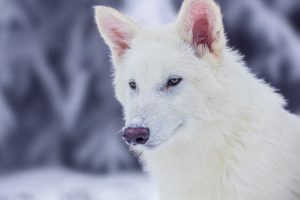 Of the 428 bird species that regularly breed in Canada, 60 species are at risk of extinction.
Of the 428 bird species that regularly breed in Canada, 60 species are at risk of extinction.
OTTAWA,ONTARIO (RUSHPRNEWS)AUGUST 19, 2008–In the last 40 years, 71% of Common Terns have VANISHED. And in the same time, over 70% of Boreal Chickadees have DISAPPEARED. Our Evening Grosbeak populations have declined by 78%.
Of the 428 bird species that regularly breed in Canada, 60 species are at risk of extinction.
Our birds are calling out for help and we must act NOW to preserve the decreasing number of places left in Canada where they can safely nest, feed and raise their chicks.
For many, these places are Important Bird Areas – the unique and sometimes rare ecosystems that these species-at-risk call home. Nature Canada supporters have been instrumental in helping to identify and protect these areas.
And these efforts are paying off. Thanks to careful stewardship of IBAs, we’ve managed to secure and protect acres of native habitats and provide much-needed refuge for many migrating birds.
But with 60 species still at risk, we cannot stop there.
Your emergency donation will be put to work immediately – in IBAs like Long Point Peninsula and Marsh in Port Rowan, Ontario. As the longest freshwater sandspit in the world, Long Point is home to many at-risk species, such as the King Rail, Least Bittern and Prothonotary Warbler. By creating large unbroken stands of cattail and controlling the spread of invasive Phragmites, you’ll help secure the future of the marsh and protect the critical nesting sites of these birds.
Â
Or at Boundary Bay, BC, one of the richest and most important ecosystems for migrant and wintering waterbirds in Canada. Boundary Bay is home to many vulnerable species, such as Sandpipers, Plovers and Brant Geese. By helping to halt encroaching development and maintain the biodiversity of this marine area, you’ll help secure the future of the Bay and protect the critical nesting sites of these birds.
Whitewater Lake is in one of the driest areas in Manitoba and consequently the only wetland refuge of many at-risk species, such as Black-Crowned Night Herons. By restoring native habitats and working to prevent drought, you’ll help secure the future of the Lake and protect the critical nesting sites of these birds.
As the narrowest point of the strait that connects Newfoundland to the mainland, the Strait of Belle Isle in Point Amour, Labrador is home to many at-risk species of sea birds, such as Scoters and Harlequin Ducks. By reducing the risk of oil pollution in this major shipping area and restoring marine habitats, you’ll help secure the future of the Strait and protect the critical migration sites of these birds.
And we have to hurry. As one of nature’s best indicator species, healthy bird populations are linked to healthy habitats for all species, including humans. When birds disappear at such an alarming rate, it’s a signal that something is very wrong.
Our birds are sending us a very important message about the impact of climate change and we must take action before it’s too late.
The good news is that the faster we act today, the more we can ease the effects of climate change on Canada’s birds. Because Nature Canada’s network of IBAs extends across Canada and hundreds of volunteers are ready to begin the rescue effort – all that’s needed to continue this vital work is your special gift today.
By protecting and restoring these critical habitats, as well as caring for migrating, nesting and wintering birds, YOU can make a difference right away and help these fragile species begin to thrive again.
We all enjoy listening to their songs. Now we must listen to the dire warning signals our birds are sending us.
Please heed their call by sending your emergency donation to Nature Canada right away.
NEWS SOURCE NATURE CANADA



